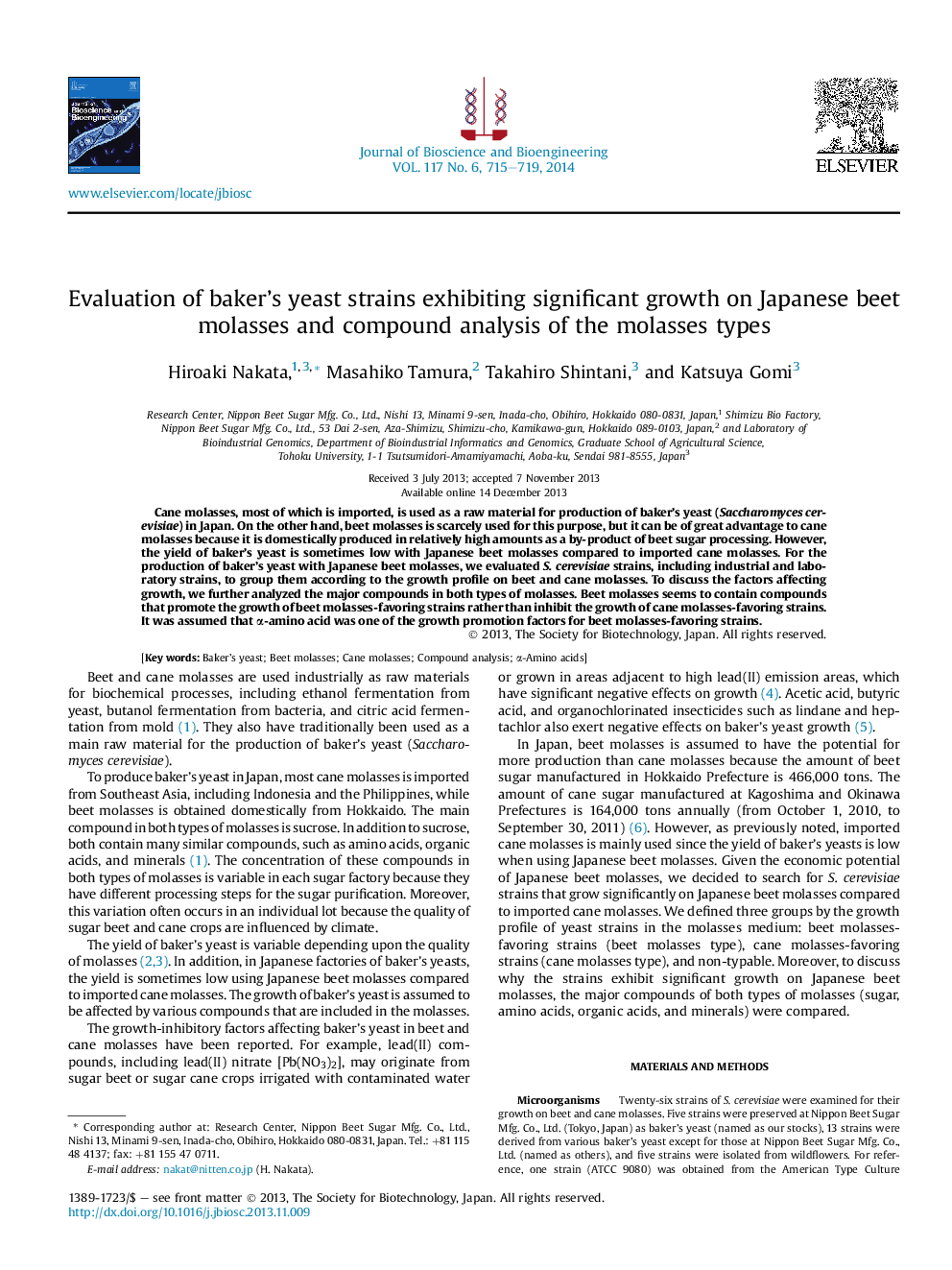| Article ID | Journal | Published Year | Pages | File Type |
|---|---|---|---|---|
| 20643 | Journal of Bioscience and Bioengineering | 2014 | 5 Pages |
Cane molasses, most of which is imported, is used as a raw material for production of baker's yeast (Saccharomyces cerevisiae) in Japan. On the other hand, beet molasses is scarcely used for this purpose, but it can be of great advantage to cane molasses because it is domestically produced in relatively high amounts as a by-product of beet sugar processing. However, the yield of baker's yeast is sometimes low with Japanese beet molasses compared to imported cane molasses. For the production of baker's yeast with Japanese beet molasses, we evaluated S. cerevisiae strains, including industrial and laboratory strains, to group them according to the growth profile on beet and cane molasses. To discuss the factors affecting growth, we further analyzed the major compounds in both types of molasses. Beet molasses seems to contain compounds that promote the growth of beet molasses-favoring strains rather than inhibit the growth of cane molasses-favoring strains. It was assumed that α-amino acid was one of the growth promotion factors for beet molasses-favoring strains.
